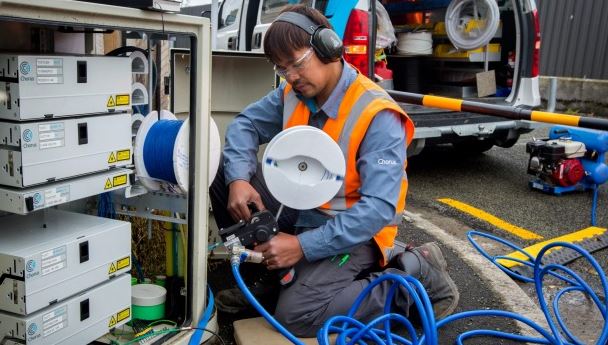
Yesterday saw the announcement that Chorus has reached an agreement with Crown Fibre Holdings to extend its ultra-fast broadband (UFB) rollout to a further 169 areas extending from Taipa–Mangonui in Northland to Bluff in Southland.
What does that actually mean?
Well, in a nutshell this decision will make fibre available to an additional 200,000 plus homes and businesses beyond the 1.1 million customers in Chorus’ existing UFB rollout areas. Awesome!
When he was asked about the new agreement, Chorus CEO Mark Ratcliffe said Chorus was delighted to be working with the Government to extend the reach of fibre broadband to so many new communities.
“Fibre is undoubtedly the future of broadband. In the five and a half years that we’ve been building the UFB network and connecting homes and businesses to fibre we’ve seen a huge upsurge in demand.
“We’re particularly pleased to see many of the towns and areas soon to benefit from fibre are within the Government’s Regional Growth Programme, helping to increase jobs, income and investment in regional New Zealand.
“We’re looking forward to working alongside local councils and lines companies as we finalise our deployment plans and we will also endeavour to make recent earthquake hit areas a priority”.
At the end of 2016, the uptake of fibre across Chorus’ current UFB deployment areas was at 32%, with areas completed earlier in the programme seeing uptake surpassing 40%. Here at Broadband Compare we love hearing about the rate of uptake of fibre. Quite simply if you can get it, you should. It is a game changer. Compare the cheapest fibre plans by clicking here and adding your address.
Monthly household internet data consumption has also burgeoned in the last five years. In 2011, as the first phase of UFB was announced, the average household used about 13 gigabytes of internet data a month. This has grown to more than 120 gigabytes a month today with nearly half of all broadband customers having made the move to unlimited data plans.
“Fibre provides the broadband equivalent of an autobahn right to the door of homes and businesses, it will future-proof these communities for the anticipated continued growth in data consumption.
“With no signs of demand waning, we’re forecasting average monthly usage of 680 gigabytes by 2020 as people access more and more online content and switch on to activities like video streaming,” said Mr Ratcliffe.
The second phase of the UFB rollout is expected to commence in July 2017 and finish by December in 2024. A list of the Chorus towns and areas can be found at chorus.co.nz/ufb2.
Chorus estimates the cost of the UFB2 communal network will be $370 million to $410 million. The cost to connect each of the 203,000 potential customers within this footprint is estimated to average $1,500 to $1,700 (in 2017 dollars and including layer 2, backbone costs for MDUs and rights of way with 10 or fewer premises).